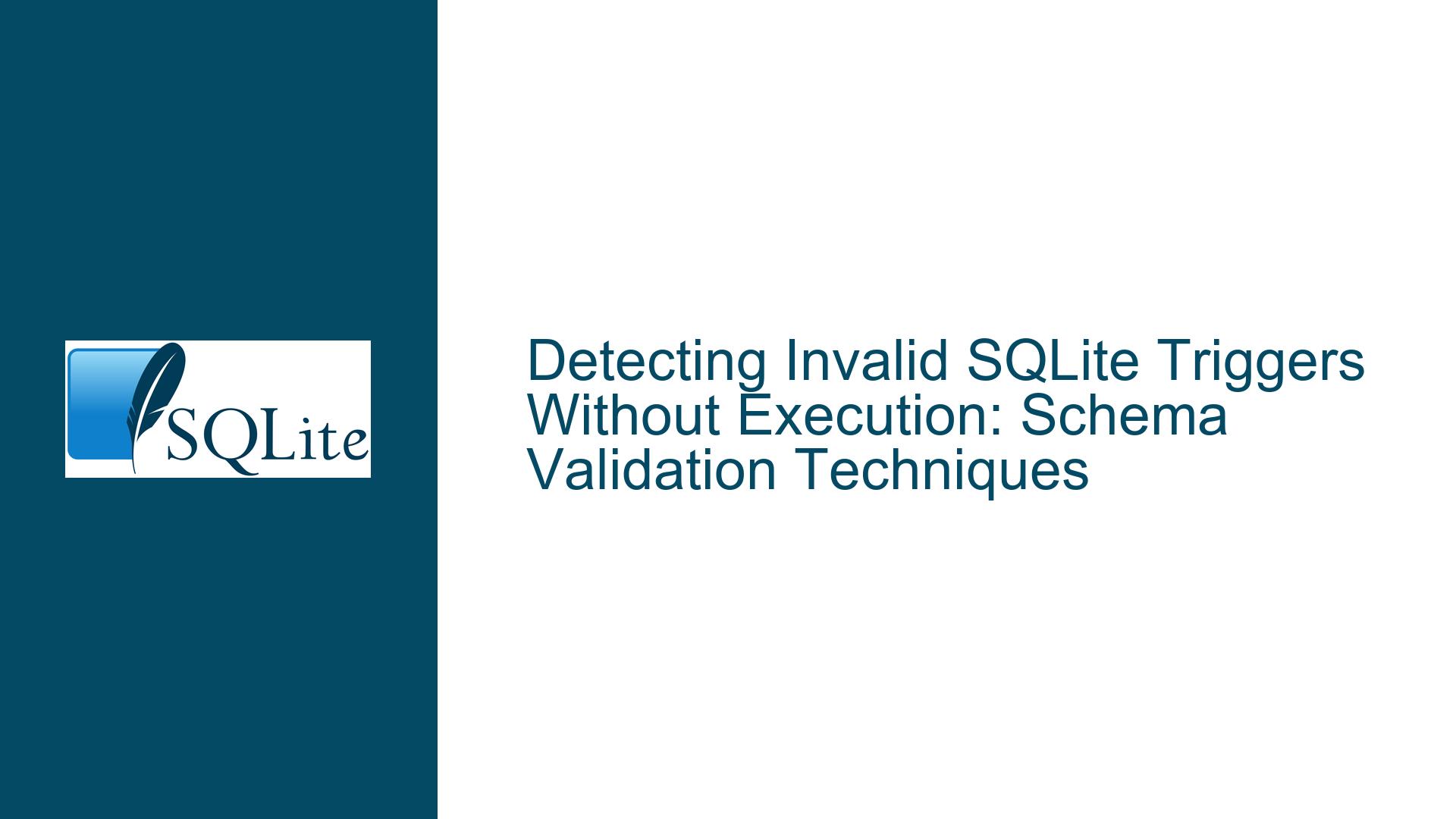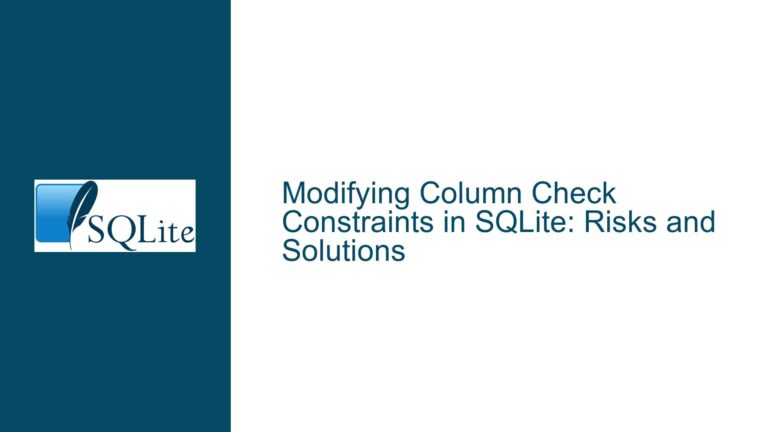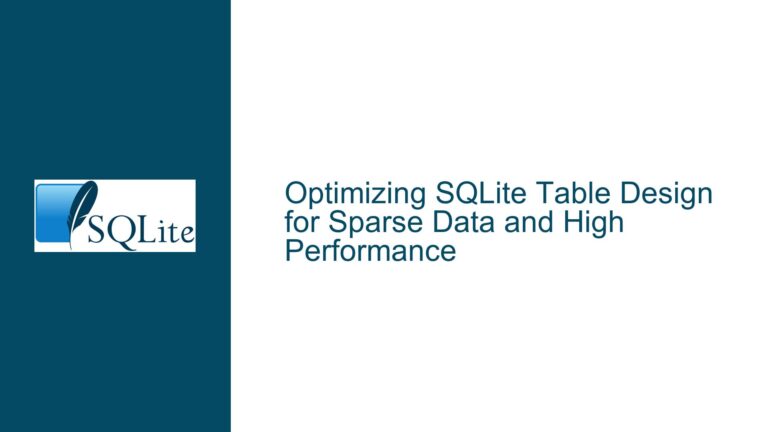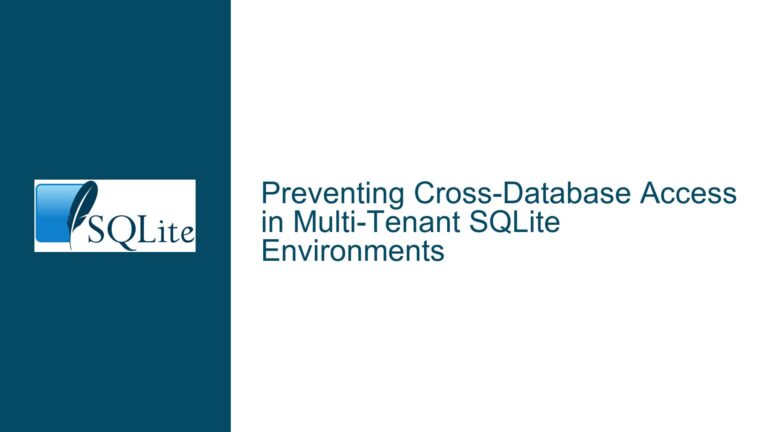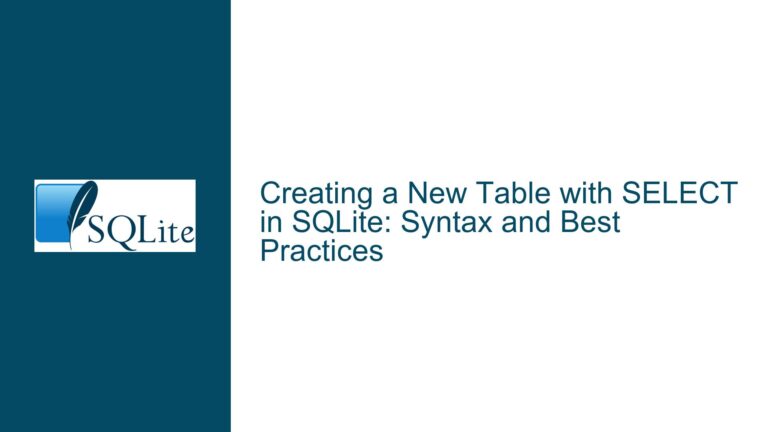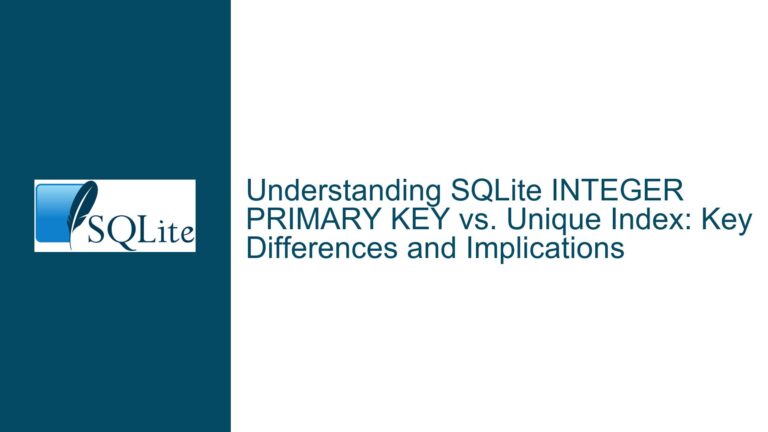Detecting Invalid SQLite Triggers Without Execution: Schema Validation Techniques
Understanding the Problem: Invalid Triggers and Silent Failures
In SQLite, triggers are powerful tools that allow you to automate actions in response to specific database events, such as INSERT, UPDATE, or DELETE operations. However, triggers can become invalid if they reference non-existent tables, columns, or other database objects. Unlike some other database systems, SQLite does not perform comprehensive schema validation at the time of trigger creation. This means that a trigger can be created successfully, even if it references an invalid object, and the error will only surface when the trigger is executed.
This behavior can lead to silent failures, where a schema upgrade or migration script completes without errors, but the underlying schema contains invalid triggers. These issues often go unnoticed until the trigger is invoked during normal database operations, potentially causing disruptions for end users. The core challenge is to detect such invalid triggers before they are executed, ideally during the schema upgrade or creation process.
The problem is exacerbated by the fact that SQLite’s schema validation is minimalistic by design. While this contributes to SQLite’s lightweight and fast nature, it also means that developers must take extra precautions to ensure schema integrity. The absence of a built-in mechanism to validate triggers and other schema objects without executing them creates a gap in the development and deployment workflow, particularly in environments where schema changes are frequent or complex.
Exploring the Root Causes: Why Triggers Fail Silently
The silent failure of triggers in SQLite can be attributed to several factors, each of which contributes to the challenge of detecting invalid schema objects proactively.
1. Lazy Schema Validation: SQLite employs a "lazy" approach to schema validation. When a trigger is created, SQLite does not immediately verify that all referenced objects (tables, columns, etc.) exist or are valid. Instead, this validation is deferred until the trigger is executed. This design choice aligns with SQLite’s philosophy of minimizing overhead during schema modifications, but it also means that errors can remain hidden until runtime.
2. Lack of Comprehensive Schema Checking Tools: Unlike some other database systems, SQLite does not provide a built-in utility or PRAGMA statement to perform a comprehensive check of the entire schema. While tools like EXPLAIN QUERY PLAN can help detect syntax errors in queries, they are not designed to validate the integrity of schema objects such as triggers, views, or foreign key constraints.
3. Schema Evolution Challenges: In dynamic environments, schemas often evolve over time. Tables may be renamed, columns may be dropped, or other structural changes may occur. If a trigger is not updated to reflect these changes, it can become invalid. However, SQLite does not automatically track or enforce dependencies between schema objects, making it easy for such issues to slip through the cracks.
4. Limited Error Reporting During Schema Modifications: When a schema modification script is executed, SQLite reports errors only for the specific operation being performed. For example, if a CREATE TRIGGER statement references a non-existent table, SQLite will not raise an error at that time. Instead, the error will be deferred until the trigger is executed. This behavior can make it difficult to identify and address schema issues during the development or deployment process.
5. Impact of PRAGMA legacy_alter_table: The PRAGMA legacy_alter_table setting can further complicate schema validation. When this setting is enabled, SQLite uses a legacy behavior for ALTER TABLE operations, which may not fully validate schema changes. This can lead to inconsistencies or invalid schema objects that are not immediately apparent.
Comprehensive Solutions: Detecting and Fixing Invalid Triggers
To address the challenge of detecting invalid triggers without executing them, several strategies can be employed. These strategies range from leveraging existing SQLite features to implementing custom validation routines.
1. Using EXPLAIN QUERY PLAN for Partial Validation: While EXPLAIN QUERY PLAN is primarily designed to analyze query execution plans, it can also be used to detect syntax errors in SQL statements. By prefixing trigger-related queries with EXPLAIN QUERY PLAN, you can identify basic issues such as missing tables or columns. However, this approach has limitations. It requires crafting dummy statements that mimic the trigger’s logic, which can be time-consuming and error-prone. Additionally, EXPLAIN QUERY PLAN does not provide comprehensive validation of schema objects.
2. Leveraging sqlite3_prepare() for Pre-Execution Validation: In environments where you have programmatic access to SQLite (e.g., using Perl, C, or another language with SQLite bindings), you can use the sqlite3_prepare() function to validate SQL statements without executing them. This function compiles the SQL statement into a prepared statement and reports any errors encountered during the compilation process. By applying this technique to trigger definitions, you can detect issues such as invalid table or column references before the trigger is executed.
3. Implementing Custom Schema Validation Routines: For more comprehensive validation, you can implement custom routines that analyze the schema and verify the integrity of triggers and other objects. This approach involves querying the sqlite_schema table to retrieve trigger definitions and then parsing these definitions to identify referenced objects. By cross-referencing these objects with the current schema, you can detect invalid references. While this method requires significant effort, it provides a high degree of control and can be tailored to your specific requirements.
4. Proposing a PRAGMA check_schema Feature: As suggested in the discussion, a built-in PRAGMA check_schema feature would be a valuable addition to SQLite. This feature could perform a comprehensive validation of the entire schema, checking for issues such as invalid table or column references in triggers, views, and other objects. While this feature does not currently exist, it represents a potential future solution that could greatly simplify schema validation.
5. Adopting Best Practices for Schema Management: To minimize the risk of invalid triggers, it is essential to adopt best practices for schema management. These practices include thorough testing of schema changes, maintaining a clear and consistent naming convention for database objects, and using version control to track schema evolution. Additionally, you should regularly review and update triggers to ensure they remain valid as the schema evolves.
6. Utilizing Third-Party Tools and Extensions: Several third-party tools and extensions are available that provide enhanced schema validation capabilities for SQLite. These tools can automate the process of detecting invalid triggers and other schema issues, reducing the burden on developers. While these tools may require additional setup and configuration, they can significantly improve the reliability of your database schema.
7. Enhancing Error Handling and Reporting: To improve the visibility of schema issues, consider enhancing your error handling and reporting mechanisms. For example, you can implement logging and alerting systems that capture and report schema-related errors during development, testing, and production. By proactively monitoring for schema issues, you can identify and address problems before they impact end users.
In conclusion, detecting invalid triggers in SQLite without executing them is a complex but solvable challenge. By combining existing SQLite features, custom validation routines, and best practices for schema management, you can significantly reduce the risk of silent failures and ensure the integrity of your database schema. While a built-in solution such as PRAGMA check_schema would be ideal, the techniques outlined above provide practical and effective alternatives for addressing this issue.
